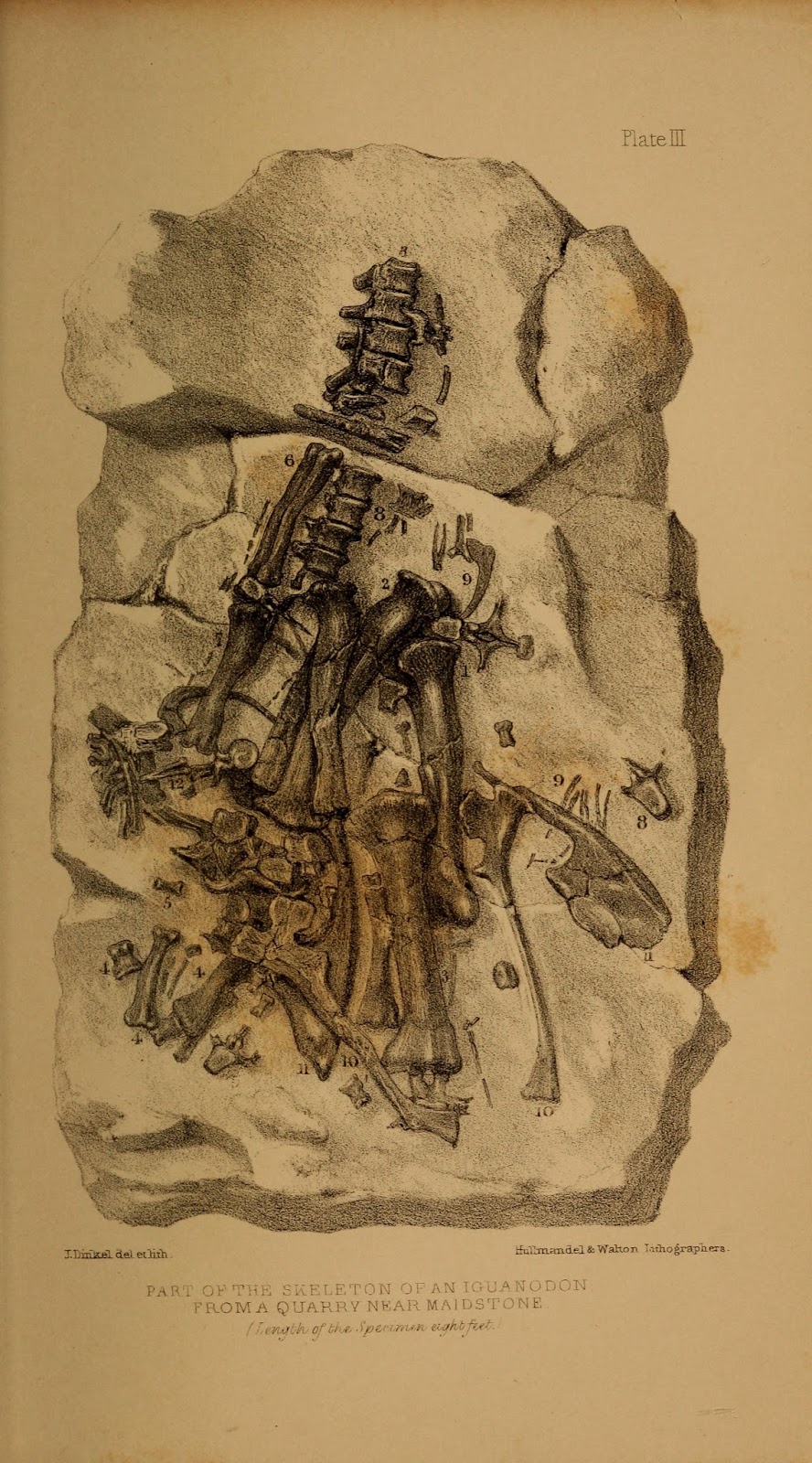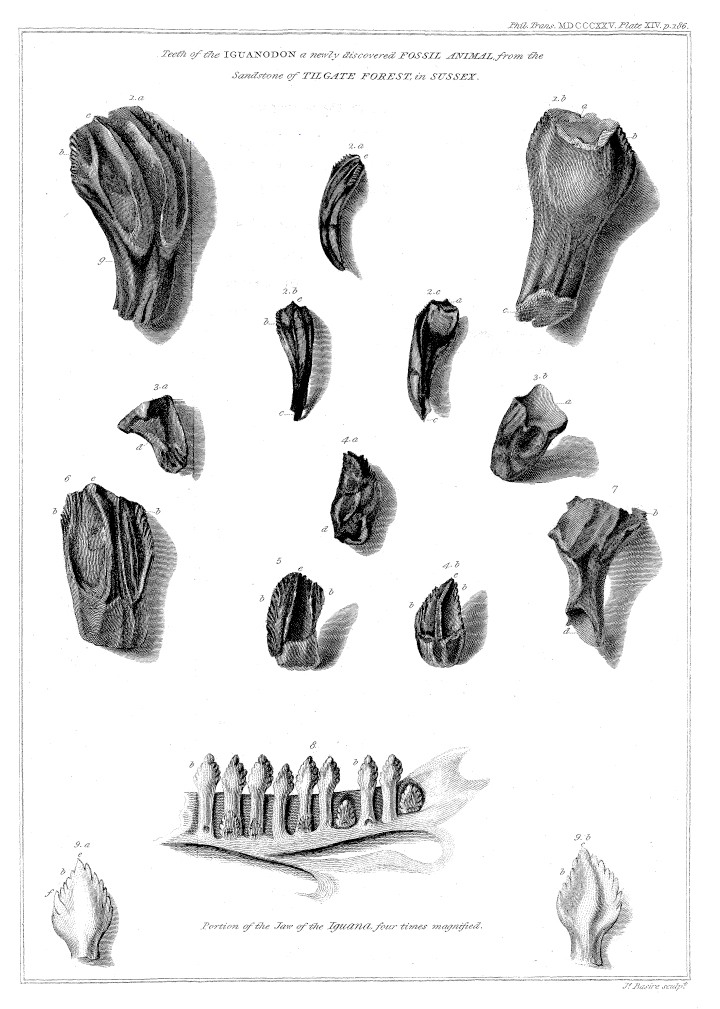Naming the Second Dinosaur: Mantell and Iguanodon
The second validly-named dinosaur was Iguanodon, but the identification of its fossils as a distinct and extinct species was a somewhat long and arduous process.
In 1822, Gideon Mantell, English geologist and paleontologist, came into possession of some large fossil teeth, discovered either by himself or his wife, Mary Ann. At the time of the discovery, Mantell had been acquiring and studying British fossils for several years, and he was in the process of publishing his first book, The Fossils of South Downs (1822).
Realizing that the teeth were something unique, but not certain what they were, Mantell presented them to several members of the Geological Society of London, including William Buckland, who described and validly named the first dinosaur genus, Megalosaurus. Geologist Charles Lyell also showed some of the teeth to the “Father of Paleontology,” Georges Cuvier. The teeth were initially dismissed as belonging to fish or a rhinoceros (even Cuvier at first attributed them to a rhinoceros). However, after his publication on Megalosaurus, Buckland again viewed Mantell’s collection of teeth, this time concluding that they were in fact teeth from a giant reptile, which he believed to be carnivorous. Emboldened by Buckland’s opinion, Mantell again sent some of the teeth to Georges Cuvier, who this time responded that he believed they were actually reptilian, belonging to an herbivore of some kind.
Hoping to elucidate the nature of the teeth further, Mantell visited the Royal College of Surgeons in 1824, where he discovered that his teeth resembled those of an iguana skeleton recently prepared by the College’s assistant-curator, Samuel Stutchbury.
Mantell was finally ready to formally present his findings. In recognition of the resemblance between modern iguana teeth and his own fossils, Mantell gave his genus the name Iguanodon, meaning “iguana-tooth.” The name and description were published in the Philosophical Transactions of the Royal Society of London in 1825 within his article “Notice on the Iguanodon, a Newly Discovered Fossil Reptile, from the Sandstone in Tilgate Forest, in Sussex.”
 |
| Fossil Iguanodon remains described by Mantell. Now classified as Mantellodon carpenteri. Mantell, Gideon. The Wonders of Geology. v. 1 (1841). http://biodiversitylibrary.org/page/40448764. Digitized by: Smithsonian Libraries. |
Although the genus name Iguanodon means “iguana-tooth,” Iguanodon represents ornithopod, herbivorous dinosaurs, which we now know are only very distantly related to modern snakes, lizards (like iguanas), and turtles (learn more about how dinosaurs, modern reptiles, and birds are related). Nevertheless, Mantell’s description represents the second dinosaur genus to be described and validly named, and together with Megalosaurus and Hylaeosaurus, were used to define Dinosauria in 1842.
Fossil Stories
Stay tuned all week for more great fossil fun with our #FossilStories campaign, including:
- Tweets and Facebook Posts
- Blog Posts highlighting milestones and key publications in the history of fossil research
- A Flickr Collection with hundreds of historic fossil illustrations
- A Pinterest Collection featuring a selection of our favorite fossil illustrations
- A BHL Collection containing seminal publications in the history of paleontology
- A series of live webcasts at BHL partner institutions
- A citizen science challenge in collaboration with The Field Book Project, the Smithsonian Transcription Center, and Smithsonian Institution Archives






Leave a Comment